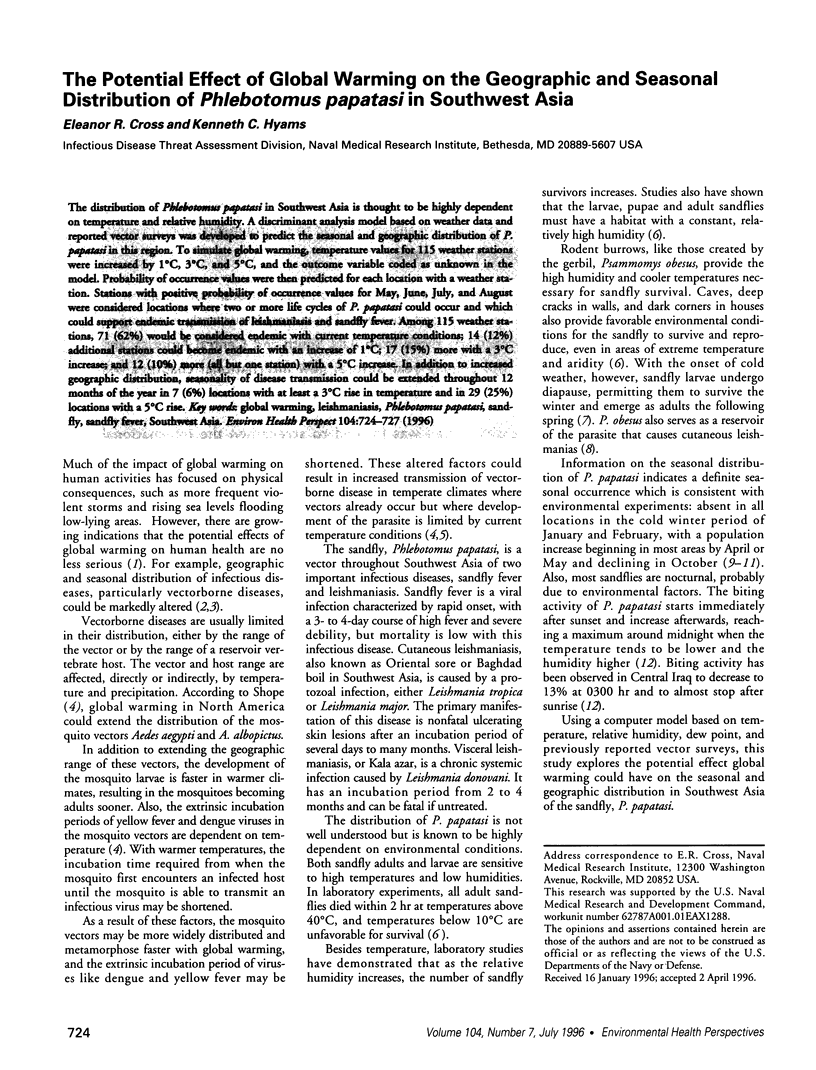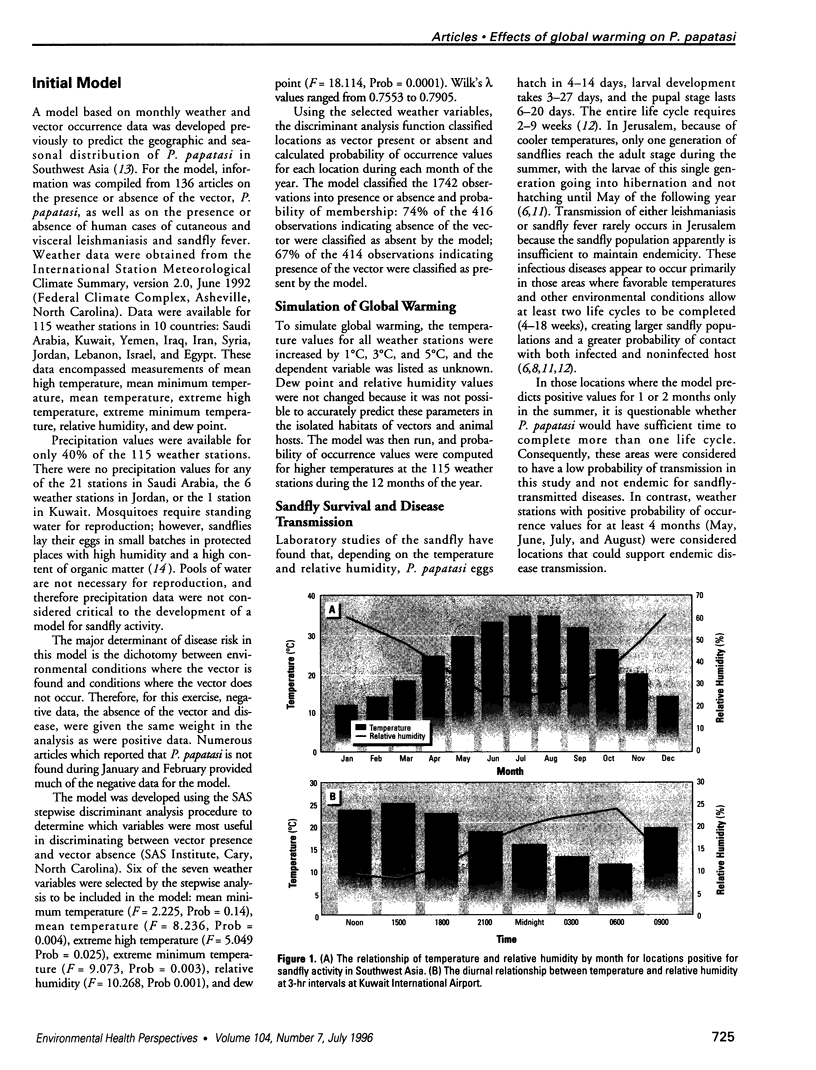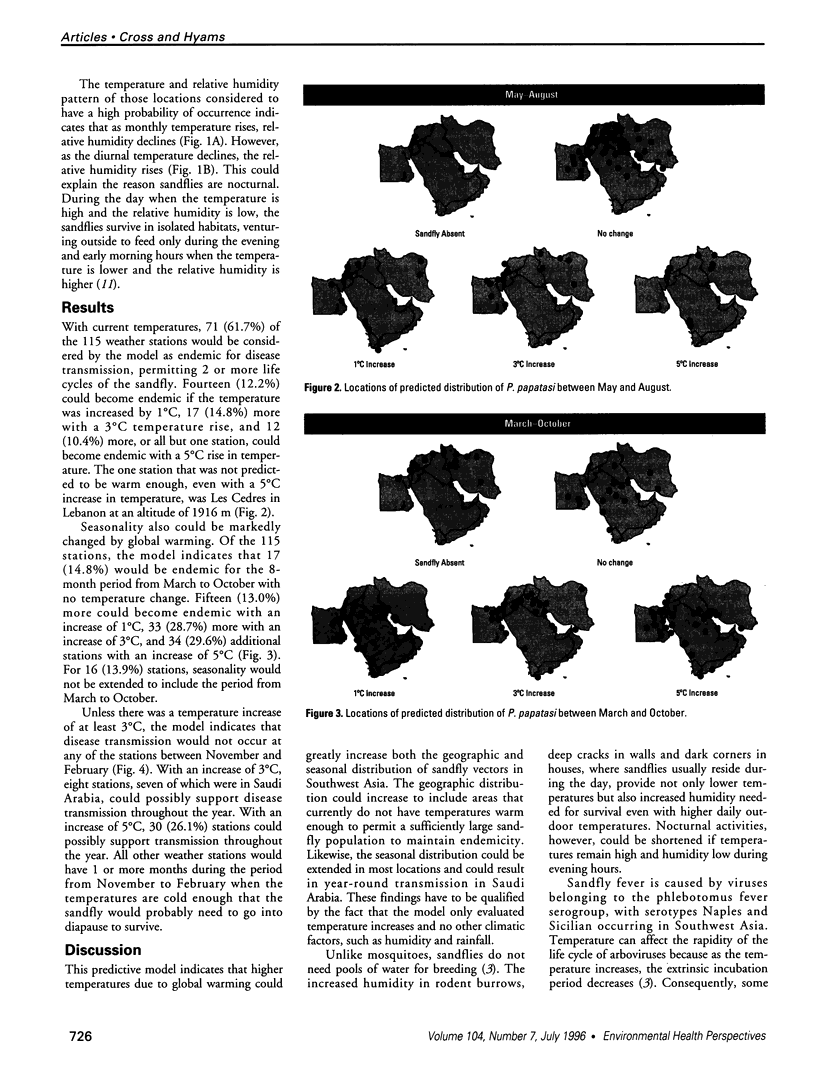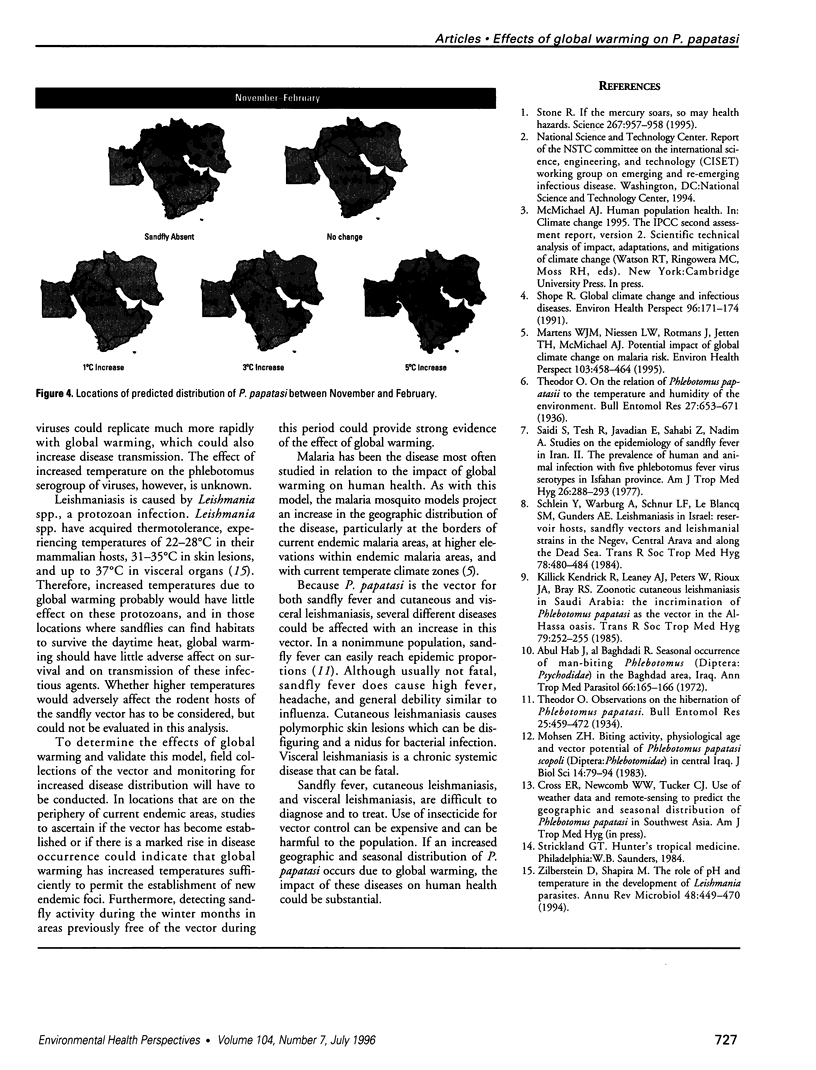Abstract
The distribution of Phlebotomus papatasi in Southwest Asia is thought to be highly dependent on temperature and relative humidity. A discriminant analysis model based on weather data and reported vector surveys was developed to predict the seasonal and geographic distribution of P. papatasi in this region. To simulate global warming, temperature values for 115 weather stations were increased by 1 degree C, 3 degrees C, and 5 degrees C, and the outcome variable coded as unknown in the model. Probability of occurrence values were then predicted for each location with a weather station. Stations with positive probability of occurrence values for May, June, July, and August were considered locations where two or more life cycles of P. papatasi could occur and which could support endemic transmission of leishmaniasis and sandfly fever. Among 115 weather stations, 71 (62%) would be considered endemic with current temperature conditions; 14 (12%) additional stations could become endemic with an increase of 1 degree C; 17 (15%) more with a 3 degrees C increase; and 12 (10%) more (all but one station) with a 5 degrees C increase. In addition to increased geographic distribution, seasonality of disease transmission could be extended throughout 12 months of the year in 7 (6%) locations with at least a 3 degrees C rise in temperature and in 29 (25%) locations with a 5 degrees C rise.
Full text
PDF



Images in this article
Selected References
These references are in PubMed. This may not be the complete list of references from this article.
- Abul-Hab J., al-Baghdadi R. Seasonal occurrence of man-biting Phlebotomus (Diptera: Psychodidae) in the Baghdad area, Iraq. Ann Trop Med Parasitol. 1972 Mar;66(1):165–166. doi: 10.1080/00034983.1972.11686811. [DOI] [PubMed] [Google Scholar]
- Killick-Kendrick R., Leaney A. J., Peters W., Rioux J. A., Bray R. S. Zoonotic cutaneous leishmaniasis in Saudi Arabia: the incrimination of Phlebotomus papatasi as the vector in the Al-Hassa oasis. Trans R Soc Trop Med Hyg. 1985;79(2):252–255. doi: 10.1016/0035-9203(85)90350-5. [DOI] [PubMed] [Google Scholar]
- Martens W. J., Niessen L. W., Rotmans J., Jetten T. H., McMichael A. J. Potential impact of global climate change on malaria risk. Environ Health Perspect. 1995 May;103(5):458–464. doi: 10.1289/ehp.95103458. [DOI] [PMC free article] [PubMed] [Google Scholar]
- Saidi S., Tesh R., Javadian E., Sahabi Z., Nadim A. Studies on the epidemiology of sandfly fever in Iran. II. The prevalence of human and animal infection with five phlebotomus fever virus serotypes in Isfahan province. Am J Trop Med Hyg. 1977 Mar;26(2):288–293. doi: 10.4269/ajtmh.1977.26.288. [DOI] [PubMed] [Google Scholar]
- Schlein Y., Warburg A., Schnur L. F., Le Blancq S. M., Gunders A. E. Leishmaniasis in Israel: reservoir hosts, sandfly vectors and leishmanial strains in the Negev, Central Arava and along the Dead Sea. Trans R Soc Trop Med Hyg. 1984;78(4):480–484. doi: 10.1016/0035-9203(84)90067-1. [DOI] [PubMed] [Google Scholar]
- Shope R. Global climate change and infectious diseases. Environ Health Perspect. 1991 Dec;96:171–174. doi: 10.1289/ehp.9196171. [DOI] [PMC free article] [PubMed] [Google Scholar]
- Stone R. Global warming. If the mercury soars, so may health hazards. Science. 1995 Feb 17;267(5200):957–958. doi: 10.1126/science.7863337. [DOI] [PubMed] [Google Scholar]
- Zilberstein D., Shapira M. The role of pH and temperature in the development of Leishmania parasites. Annu Rev Microbiol. 1994;48:449–470. doi: 10.1146/annurev.mi.48.100194.002313. [DOI] [PubMed] [Google Scholar]







